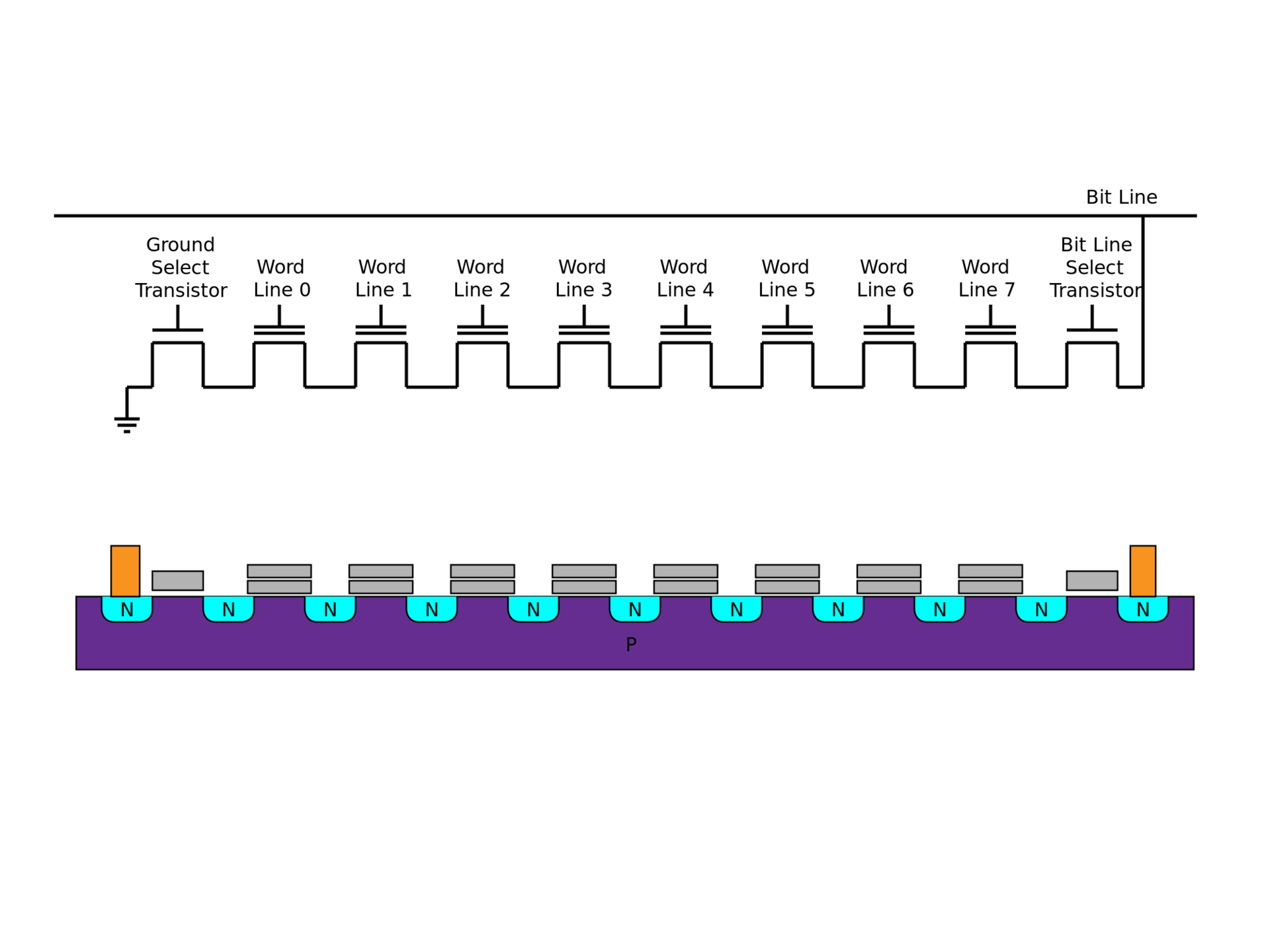How is the flash revolution going
Most recently, we talked about IBM LinuxOne mainframe and floating data centers . Today we decided to return to the topic of data storage and look at how the revolution in the field of flash memory technology.

photo by Andreas. CC
NAND technology is synonymous with record storage: Micron / Intel, SK Hynix, Toshiba / SanDisk and Samsung were already available in record-breaking 128 GB for the 8-crystal microassembly.
')
This technology has been developed thanks to a new approach, which allows not placing the cells along one level, but placing them vertically. The goal is greater density. V-NAND technology made it possible to fit 36 levels of memory cells in one matrix back in 2014.

/ photo Cyferz CC
Such finds are usually in demand exclusively in the corporate segment at the stage of its formation and cost reduction. Then you can talk about the implementation of user systems and IoT solutions.
Samsung is one of the leaders in this race, but competitors are not far behind. Toshiba announced the release of its products based on 3D NAND by the end of the year. At the same time, Intel has also tightened up , but it is not yet ready to engage in dialogue about any consumer products.
The essence of the development of Intel and Micron is to replace the transistors, taken as the basis in the flash memory device, on the microscopic wire grids connected with the help of “selectors”. This technology is called 3D Xpoint .
Here we can talk about a speed increase of 1000 times compared with flash memory. According to experts, in the span of five years we will see the available embodiments of devices based on 3D Xpoint.
PS A little about the work of the virtual infrastructure provider 1cloud :

photo by Andreas. CC
NAND technology is synonymous with record storage: Micron / Intel, SK Hynix, Toshiba / SanDisk and Samsung were already available in record-breaking 128 GB for the 8-crystal microassembly.
')
This technology has been developed thanks to a new approach, which allows not placing the cells along one level, but placing them vertically. The goal is greater density. V-NAND technology made it possible to fit 36 levels of memory cells in one matrix back in 2014.

/ photo Cyferz CC
Such finds are usually in demand exclusively in the corporate segment at the stage of its formation and cost reduction. Then you can talk about the implementation of user systems and IoT solutions.
Samsung is one of the leaders in this race, but competitors are not far behind. Toshiba announced the release of its products based on 3D NAND by the end of the year. At the same time, Intel has also tightened up , but it is not yet ready to engage in dialogue about any consumer products.
The essence of the development of Intel and Micron is to replace the transistors, taken as the basis in the flash memory device, on the microscopic wire grids connected with the help of “selectors”. This technology is called 3D Xpoint .
Here we can talk about a speed increase of 1000 times compared with flash memory. According to experts, in the span of five years we will see the available embodiments of devices based on 3D Xpoint.
PS A little about the work of the virtual infrastructure provider 1cloud :
Source: https://habr.com/ru/post/265179/
All Articles